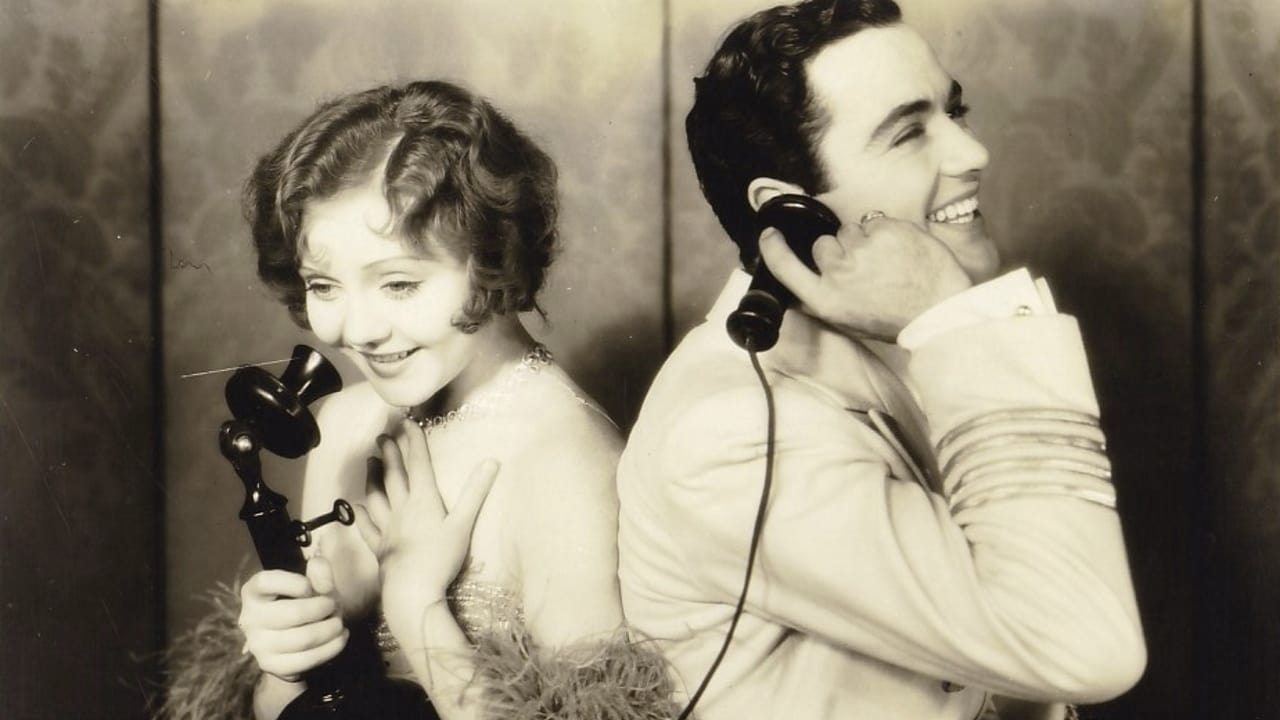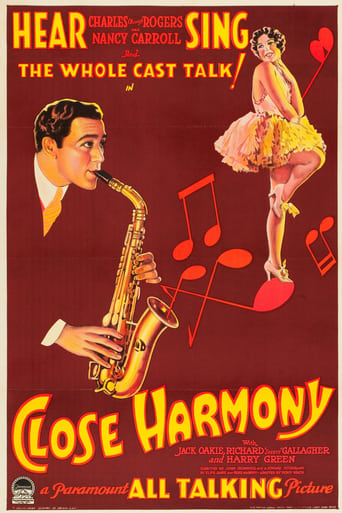



Yawn. Poorly Filmed Snooze Fest.
The best films of this genre always show a path and provide a takeaway for being a better person.
View MoreIt's a movie as timely as it is provocative and amazingly, for much of its running time, it is weirdly funny.
View MoreStrong acting helps the film overcome an uncertain premise and create characters that hold our attention absolutely.
View MoreWell, I finally got around to seeing this very early Paramount Musical from 1929 at the UCLA Archives tonight and I wasn't disappointed. Buddy Rogers plays struggling band leader Al West who gets tossed out of his boardinghouse for making too much racket while rehearsing. He is rescued from almost certain arrest by fetching, adorable Nancy Carroll who plays singer/dancer Marjorie Merwin, headlining star at the Babylon theater. There is instant chemistry between the two, and Marjorie convinces theater manager Max Mindel (Harry Green, Paramount's resident shtickmeister) to give West and his band a showcase. Trouble brews when Al is A Hit, demands some dough, and gets the bum's rush when a new "class" act comes to town...Barney and Bay (early Paramount stalwarts Jack Oakie and Skeets Gallagher). Trouble brews, cooked-up by Marjorie, to get rid of the duo so Al can continue to play on stage at the Babylon. With some funny bits verging on material evoking Laurel and Hardy, all hell breaks loose in a restaurant scene when jealousy erupts between all parties concerned. You can rest assured that everything gets happily resolved at the fadeout. By this time Carroll and Rogers had starred together in their previous hit "Abie's Irish Rose" and I must admit the sparks really fly between them on the screen in this musical comedy as the two young lovers. Nancy Carroll never looked better, and Buddy Rogers could have been a star in any era. He possessed a great speaking voice for early sound, and actually played all the instruments in his band, both on the screen and in real life. Plus, The term "matinee idol good looks" might have been invented for Buddy. Both would be reunited again in the great 2-Strip Technicolor Paramount musical,"Follow-Thru"(also restored by UCLA) in 1930. A letdown for me was the initial song and dance act of headliner Carroll as Marjorie. We expect her to be sensational, but young Nancy looks unsure and ill-at-ease before the cameras and microphone in this--her first Big Number in talking pictures. Nancy's singing of the 20s hit specially written for the picture, "I Want To Go Places And Do Things" seemed a bit shrill and quavering, and she appeared to be "out to sea" looking uncomfortable in her dance routine (I blame the directors, Eddie Sutherland and John Cromwell here, for Carroll seems under-rehearsed and searching to hit her mark-- with a sometimes perplexed look on her face!). But she quickly regains her footing as an actress in all of her subsequent scenes, radiating star power in every frame with her well modulated speaking voice and acting chops that made her one of the great superstars of early talkies. And did I say she was easy on the eyes? And how! You will become enchanted with her too. In addition, as a music collector of '20s and '30s era '78 hot dance records and coin piano rolls, I really appreciated the fine sound of the hot dance band music featured in this movie. With film and audio recently restored by Universal (who owns the rights to this picture), this music is something to be seen, heard AND savored. Let's hope that "Close Harmony," unseen for decades, is made available to be showcased on TCM. Or better yet, on TCM AND DVD. And soon! Thanx again, UCLA!
View More